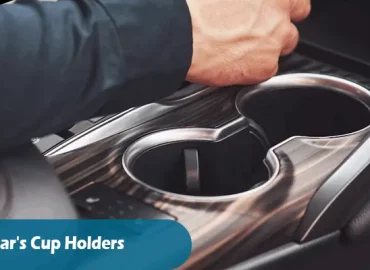So you want to tint your car windows, but you’re not sure how dark you can go without breaking the law? We hear you. Tint car windows are a great way to customize and add privacy to your vehicle, but tinting that’s too dark can be illegal in some states.
No one wants to get pulled over for having too-dark windows, so it’s important to do your research before committing to a certain level of tint. In this article, we’ll provide all of the information you need to make sure your window tinting project is legal in each state.
We’ll also tell you about other factors that influence how much tint is allowed, what kinds of tints are best for each application and why, and which window tints will stand the test of time. Get ready to know everything there is to know about car window tinting.
Understanding Car Window Tint Laws in Your State
Tinted car windows give your car an added layer of privacy and protection while enhancing its aesthetic. But did you know that each state has laws regulating how much tint you can put on car windows?
When choosing window tint, it’s important to be aware of the legal limits in your state. Regulations vary across the country, so what’s legal in one place may not be allowed somewhere else. In general, all windows must allow at least 35% of light through.
The windshield is usually allowed to have a non-reflective tint strip at the top that is no wider than three inches from the top of the windshield. The front side windows must allow more than 24% of light through and the rear side and rear window need at least 10%. Rear window tints are often more restricted than others, due to safety concerns.
Aside from legal restrictions, most states also have regulations about reflective tints on vehicle windows; these tints can cause glare when light strikes them and become a problem for other drivers. So before you decide to add a bit of extra color to your ride, make sure you do your research first.
How Dark Can You Tint Your Car Windows Legally?
What’s the legal limit on how dark you can tint your car windows? The answer varies depending on the state, but there are a few things to keep in mind.
The percentage of visible light transmission measures the tint’s darkness. As a general rule, most states don’t allow car windows to be darker than 35%. However, some states will permit darker tints if they also include an affixed sticker that confirms compliance with the law.
Second, all tints must meet a minimum level of reflection. To pass this test, tints must reflect a certain amount of light back onto the street when headlights shine on the window at night.
Finally, some states allow additional tints on certain windows as long as they meet specific criteria. These criteria may include restrictions based on where you live and can vary significantly from state to state.
It’s important to do your research on local laws before having your car windows tinted since regulations can be different from place to place and violators can be subject to fines or other penalties if caught with excessive tints.
The Different Types of Automotive Window Tints
You may have heard of the different kinds of window tints, but you might not know how they differ. Here’s a quick breakdown of the three types.
Dyed Window Tint
The most common type of window tinting is called dyed tinting. This tint has a colored film applied to the interior side of your car windows which blocks some of the sun’s rays. It also provides a layer of privacy for the interior of your car, because people can’t see inside your vehicle easily. The drawback? This type doesn’t last very long, and tends to fade after a few months or years, depending on where you live and what kind of environment your car spends time in.
Metalized Window Tint
Metalized window tints are more expensive than dyed tints. But they tend to last longer due to the reflective properties of their composition. The metallic components in these types of tints reflect some solar energy back outwards and away from your vehicle. Making them more efficient at blocking heat and UV rays while still reducing glare. On top of that, you get better clarity with this type than with dyed window tints.
Ceramic Window Tint
Ceramic window tints are much more expensive than both dyed and metalized versions due to their superior performance in terms of heat rejection and clarity—plus they don’t interfere with most cell phone signal either. The drawback here is that ceramic window tints tend to be thicker than other varieties so they can be a bit harder to install properly without bubbles or creases forming in them.
Benefits of Tinting Your Vehicle’s Windows
It’s not just about the look of your car; tinting your windows can actually provide you with a few benefits. Here’s what you need to know:
Reduced glare
Tint films can help reduce glaring sunlight and reduce the risk of distractions from bright lights or reflections. This is especially important for drivers who have to travel in bright, sunny climates for extended periods of time. As an added bonus, tint films can also protect against UV rays. Which can help minimize visibility issues due to sunburns and aging skin.
Increased privacy
Installing window tints is a great way to help maintain your privacy while driving. If someone looks into an automobile with tinted windows. They will not be able to see what is happening inside the car. This added layer of privacy can be especially beneficial when parking in crowded places or prohibited areas.
Added security
It’s more difficult to steal or vandalize windows with tint. Adding ultraviolet inhibitors during manufacture makes sure the tint film remains intact and won’t fade easily with time. With this extra level of security, you’ll be able to keep valuables and other items safe inside your car without worrying about theft or damage.
What to Look for in a Quality Car Window Tint
When selecting a quality car window tint, there are a few things you should look for. Make sure that the tint you choose has all the features and attributes necessary for both performance and safety.
UV Protection
One of the most important characteristics is UV protection. Most modern car tints have a UV-blocking layer that prevents UV rays from entering the car and harming your skin, as well as fading upholstery. Be sure to check the percentage of UV protection that is offered—ideally, it should be 99%.
Durability
A good window tint car not only has to block out UV rays but also be durable enough to withstand daily wear and tear. Look for tints that are scratch resistant and won’t fade or bubble over time.
Conclusion
All in all, tint car windows can provide many benefits, from improved privacy to reducing sun damage. However, it’s important to understand the regulations and laws that apply to your area before you start tinting. If you’re uncertain about what’s allowed, it’s best to consult a professional such as a car window tinting shop. This way, you’ll be able to enjoy the benefits of tinting without any legal repercussions.




